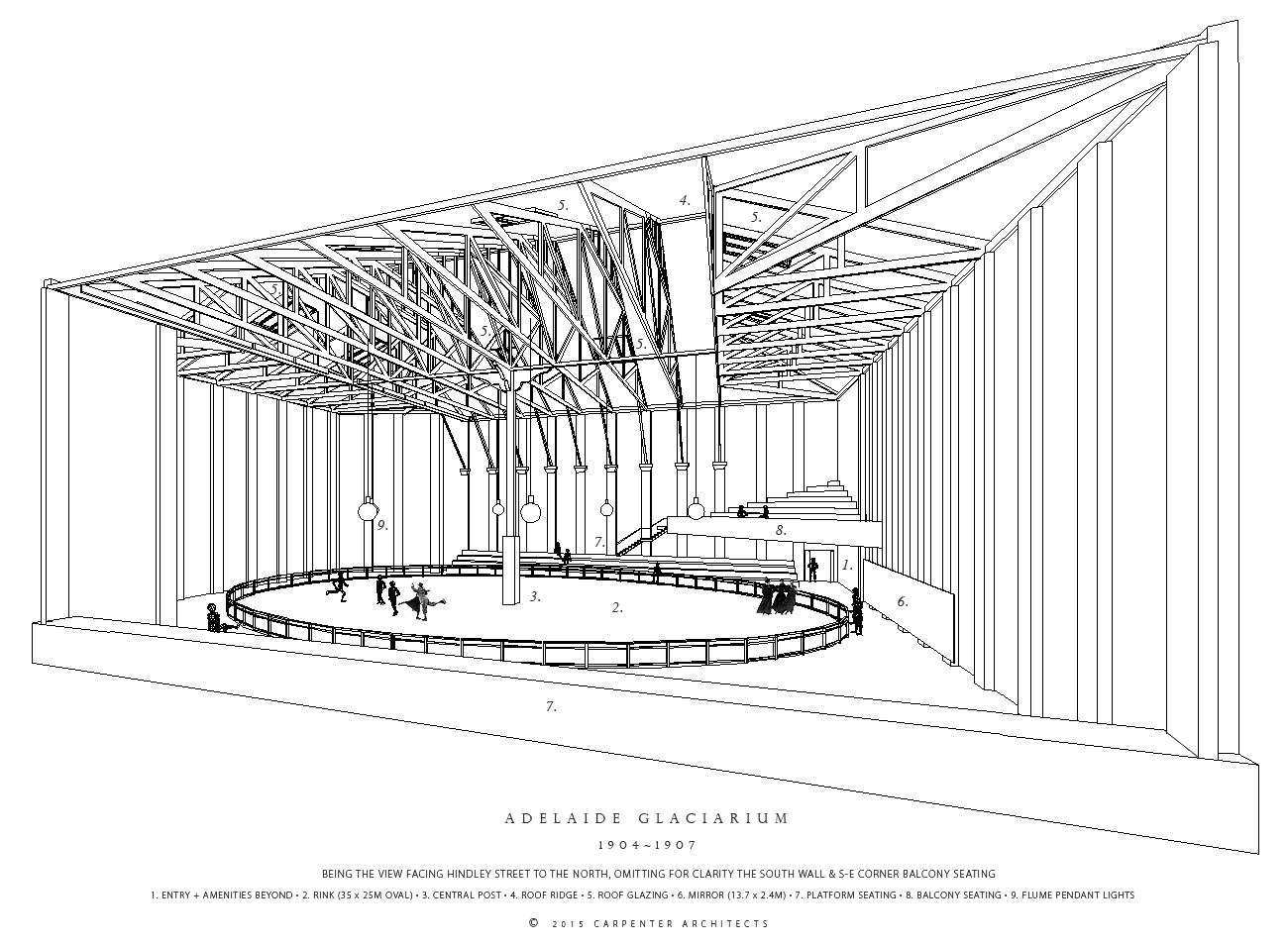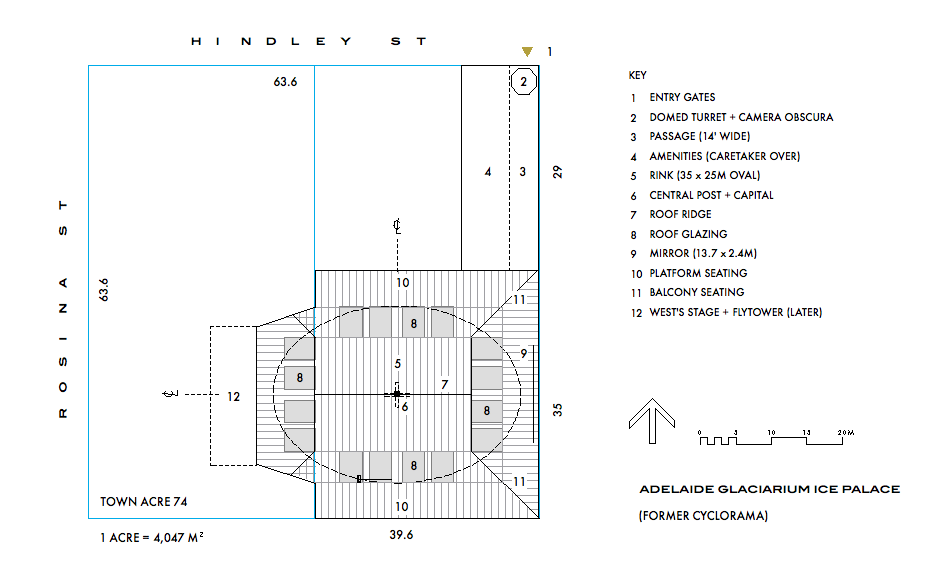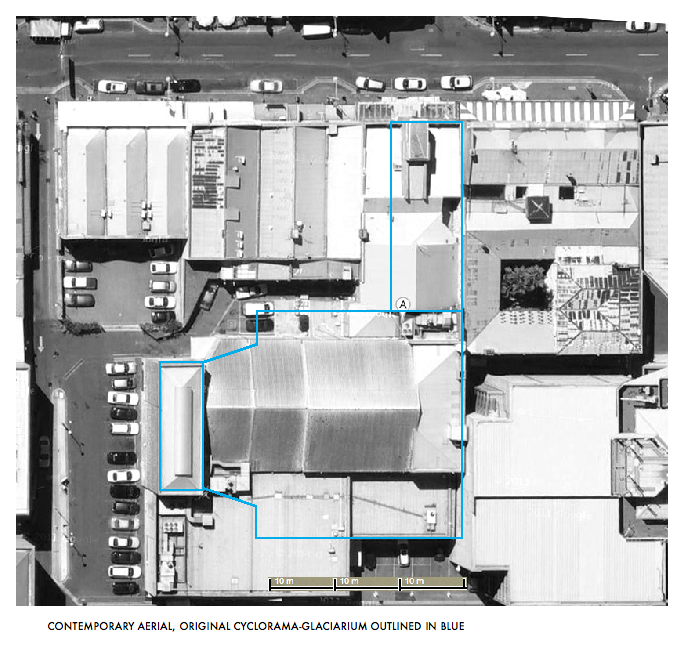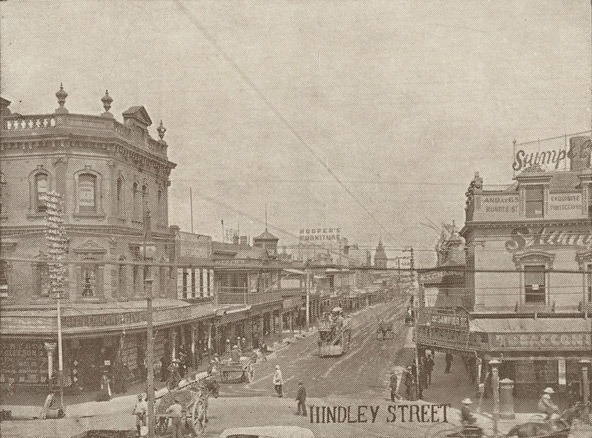




A L Reid entry on The Menin Gate, Ypres in Flanders, Belgium. Also see Panel 153 in the Commemorative Area at the Australian War Memorial.
CAREER SUMMARY
Birth
21 Sep 1889
Melbourne Vic Australia
Death
9 Jun 1917 (KIA)
Ypres Belgium
Clubs
VIHA Beavers
Skating Championships
Australian Men's Champion (NISAAV) 1913
Goodall Cups
1909, 1910, 1913
Refrigeration Engineer AMIE (Aust)
Captain, VIHA Beavers
1st Secretary, VIHA
BORN SEPTEMBER 21ST 1889 at Hawksburn, near South Yarra in Melbourne, the eldest son of Lucy Marsden and H Newman Reid who developed the first ice rinks in Australia at the turn of last century, and who is known as the founder of ice sports in Australia. His brothers Hal and Leslie (Snowy) and sister Mirey were among Australia's first ice skaters and ice hockey players. All three boys attended Melbourne Grammar School which supplied players to the original four ice hockey clubs of Australia.
Reid became a volunteer Cadet at Melbourne Grammar and at St Peter's College in Adelaide when the Reids moved there in 1904 and built the experimental Glaciarium Ice Palace, Australia's first ice rink. All three boys probably played bandy there in late-October 1904 when Andy was 15, Hal was 13, and Leslie was 10. He trained from 14 with Dunbar Poole; Professor Brewer from Prince's Skating Club in London; and such players as Australian roller skating champion John Caldwell, and Canadian-born Herbert Blatchly, the captain of Australia's first ice hockey team.
Andy developed into an exceptional ice sports athlete within a few short years, and he was a notable athlete at school where he won the football championship and other honours. Regarded by school mates as "one of the best", he represented MGS in the athletic teams of 1907 and 1908, and the football eighteen of 1908.
He matriculated in 1907 with Physics honours and did his Senior Public in 1908. On September 12th that year, he was a foundation member and first secretary of the Victorian Amateur Ice Hockey Association at Melbourne Glaciarium, the first in both Victoria and Australia. Formed entirely of players, the other members were treasurer Walter Purbrick, Lorimer, Ward and Errol Forster-Woods. Reid may have also performed the functions of the first honorary president.
Reid attended university shortly after 1909 where he graduated as a refrigeration engineer like his father. Years later, a newspaper obituary noted, "...after leaving school for the 'Varsity he won the ice skating championship and other Glaciarium prizes". His brother, Hal, was the first NISAA National skating champion on record in 1911, and Andy was the National skating champion two years later in 1913.
By 1911, Australia's seven ice hockey clubs were split three in Sydney and four in Melbourne. Reid was captain of Beavers from the start and its top goal-scorer. He represented Victoria in the first match played against New South Wales at Melbourne in 1909. [1] NSW won the first game 1–0, but lost the other two 0–1 and 1–6.
Andy was about 18, and he played for Victoria against NSW again the following year in Sydney; the first Interstate match played by Victorian John Goodall, donor of the Goodall Cup. Victoria won the first two Cups with Andy in these years, and then lost in 1911 and 1912, the years Jim Kendall first represented New South Wales. Victoria won again in 1913 with Andy and Leslie, after which interstate ice hockey ceased for six years due to war.
Reid gained a commission as 2nd Lieutenant from Duntroon Military College on June 5th 1915 but, at 27 in 1917, he was killed in action on the boggy, shell-torn and poisoned Messines Ridge, fighting for Belgium’s freedom. He was among the first few Australians to develop skating and hockey skills locally, and to a standard that won both Victoria and he, some of the very first ice hockey championships. Although he never competed internationally, Andrew Lambert Reid was Australia's first home-grown ice champion.
[1] Sir Stanley Melbourne Bruce (1883–1967) commanded the Melbourne Grammar Cadets during Andy's time. Bruce was born at Stadbroke, a few doors from the home of John Goodall's grandfather in Grey Street, St Kilda, and he later became Prime Minister of Australia.
[2] The schools the Reids attended had been established by early colonists who benefitted from the Public Schools they attended in Britain. They wanted equivalent institutions here for their sons. Andy attended St Peter's when Rev Henry Girdlestone (1863–1926) was headmaster. Girdlestone was a former stroke of an Oxford Eight, who became acting headmaster of Melbourne Grammar School between 1917 and 1919, and patron of the Melbourne University Boat Club when Barney Allen was president of both it and the National Ice Skating Association of Australia. In 1912, Andy's schoolmate, Simon Fraser Jr, rowed in the first Australian eight to compete at the Olympics.
[3] Reid lived at the Reid family home, Locksley, in Haverbrack Avenue, Malvern. In his prime, he was 5-feet 7 1/4-inches tall (171 cm), with a 35- to 37-inch chest and weighed 142 pounds (64.4 kg). He had a fair complexion, brown eyes and dark brown hair. Three scars on his left arm and shoulder blade, and one on his left knee, were probably stick or skate-blade injuries.
[4] In the years between 1911 and 1929, Australian men aged between 18 and 60 were required to perform militia service. Training and service had been compulsory in time of peace since 1911, and the Government was empowered to call up 'unexempted’ males in time of war. All three Reid boys had to train and serve in the army at some point, but Andy had chosen to soldier earlier in the Commonwealth Cadet Corps in Adelaide and Melbourne, for two years from the age of 13 or 14.
[5] Duntroon was modeled on the Royal Military College of Canada, and the military colleges of Britain and the United States.
[6] Reid transferred from the Royal Park Depot to D Company of the 38th (Bendigo) Infantry Battalion in Bendigo. Sir George Victor Lansell (1883–1959), a former Melbourne Grammarian, became its captain in May 1916. Andy subsequently transferred to 49th Battalion. Oddly, Andy had resigned his officer commission and re-enlisted in January, 1916 as a Private, then a Sergeant, in the same Battalion. This story is more accurately described in another of his obituaries, "Enlisting soon after war broke out, he soon earned his stars; but finding that owing to a surplus of junior officers he would be detained in camp for some months, Andrew Reid resigned his commission and re-enlisted in order to get to the trenches with his pals. When the newly enlisted ex-officer marched back to camp the whole place rang with cheers and applause. But the lost commission was soon picked up in the trenches. Liuet Andrew Reid died as he lived — a sport in the highest sense of the word."
[7] The conditions at Messines made that battle a byword for suffering, and few landscapes are more redolent of war. Over 850,000 died there, including 325,000 British soldiers. He was 27-years-old when he was killed on June 9th, 1917. He was buried West of Yaer Canal on the northern outskirts of Ypres (now Ieper), West Flanders, Belgium and he is listed on the Menin Gate Memorial at the eastern exit of the town, 'REID, Lt Andrew Lambert, 51st Battalion, 9th June 1917, Age 27. Son of Henry Newman Reid and Lucy Reid, of 9 Blackfriars St, Sydney. Native of Melbourne.' [97, 99] Since the 1930s, with the brief interval of the German occupation in the Second World War, the City of Ieper has conducted a ceremony at the Memorial at dusk each evening to commemorate those who died in the Ypres campaign.
[8] Messines was considered a strong strategic position, not only from its height above the plain below, but from the extensive system of cellars under the convent known as the 'Institution Royale.' The village was taken from the 1st Cavalry Division by the Germans in November, 1914. An attack by French troops in November, 1916 was unsuccessful, and it was not until June, 1917 at the Battle of Messines in which Andy was killed, that it was retaken by a New Zealand Division; perhaps the first clearcut British victory. Now marked on maps and signed as Mesen, there is a well-known sequence of aerial photographs that show, over a few months, the total destruction of this village. It was ground into dust. Andrew Reid's name is also carved on the Great Cross at Messines Ridge British Cemetery, on the Nieuwkerkestraat road at Mesen in Belgium.
[9] Reid entered Duntroon Military College about 1913, just two years after it had been established on the old Campbell family homestead in Canberra. There he gained a commission as 2nd Lieutenant on June 5th, 1915, graduating with a Diploma of Arts (Military) after completing the 18-month military and academic course. He served seven months as Provisional Lieutenant and six months as a Lieutenant with the 48th Kooyong Infantry of the Australian Citizen's Military Force (CMF), now the Army Reserve. He enlisted on January 18th, 1916 and left Australia on A54 Runic on June 20th, 1916. He was attached to the 51st Battalion and proceeded to France in October where he served throughout the winter, and where he was promoted once again to Lieutenant a few months later. He spent a few days leave in London immediately prior to going into action at Messines.
[10] In Adelaide "... The advertisement below announces that a "Great Ice Hockey Match" would be played on Wednesday October 12th, 1904. Names of the players are not known, but four of them would have been Mr Newman Reid's sons; Hal, Andy, Les (Snowy) and Dunbar Poole." [2]
[11] Andy was named after his uncle, a pioneer of Mildura in north-western Victoria who died at the age of 23, the same year Andy was born.
[12] The first Australian club team in 1907, simply named "Glaciarium", and in 1908 Melburnians, Beavers and Brighton; the original four. They were joined by Ottawa in 1910.
Ross Carpenter, 'Reid, Andrew Lambert (1889-1917)', Legends of Australian Ice, Melbourne, Australia, http://icelegendsaustralia.com/legends-2/bio-reid-a.html, accessed online .






